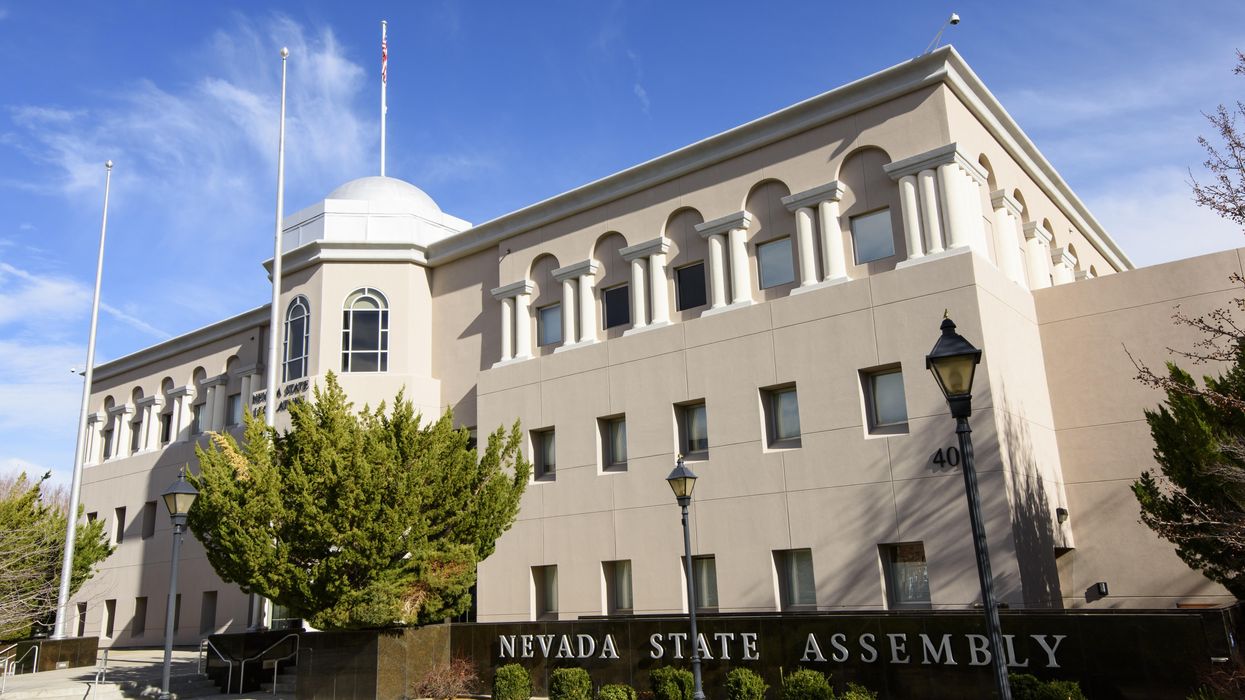The population in every state is near-evenly split among men and women. But the same cannot be said of most state legislatures.
Only five state houses have a gender balance within 10 percent of the population – which is better than state senates, where just three are within that margin, according to research conducted by Vote Run Lead, which trains women to run for office.
“The state of our democracy – especially at the state level – is not of and by the people. Women are remarkably underrepresented in our state legislatures,” said Erin Vilardi, founder and CEO of Vote Run Lead. “Without a serious intervention it will be decades to hundreds of years before we reach gender parity.”
Nevada is the clear outlier among the 50 states, as it is the only place where women are over-represented in a chamber, with women holding 68.3 percent of the seats in the state Assembly while being 49.9 percent of the population. It is the only one near the top of the list for both chambers.
The Nevada Senate has a negative 4.9 percentage point gap between women in office and women in the population, trailing just Arizona (+3.3 points) and Rhode Island (-3.9 points).
Vilardi identified three reasons Nevada elects such a high rate of women to legislative offices: a strong network of women recruiting and supporting other women, a smaller legislature than most states (it has the third fewest seats, after Alaska and Delaware), strong role models in U.S. Sens. Catherine Cortez Mastro and Jacky Rosen. Minnesota and New Hampshire are the only other states with two women senators.
“Obviously, overall there is a readiness and willingness of voters to vote for women,” Vilardi said.
Among the five “close to equal representation” states on the house side, three are have a slightly higher share of women in office compared to the general population:
- Nevada at +2.1 points.
- New Mexico at +1.7 points.
- Colorado at +1.2 points.
The are two are slightly below even: Maine (-3.4 points) and Maryland (-4.1 points),
Vilardi explained that Democratic-leaning states tend to have more women in office, but party is not the only reason some states are closer to parity than others.
“Another trend is that in some states, like Colorado, there is a long history of deep organizing by women’s groups – including Vote Run Lead, as well as center-left infrastructure like Emerge America – that have prioritized women and people of color over the last decade,” she said.
At the other end of the spectrum, women are “severely underrepresented” in 18 states with South Carolina the furthest from equal. Just 10.8 percent of legislators are women, even though women make up 51.6 percent of the population. South Carolina does slightly better on the House side, with a gap of 32.2 points.
Tennessee has the biggest gap on that side, with a 40-point gap.
Overall, 31 percent of state legislators are women.
“Recruiting, training and candidate support are necessary to achieve a better balance and we can go even further. That means examine the systemic changes that would propel more women forward,” said Vilardi, who identified specific ways to closing the gap. “This includes more ranked-choice voting elections, where we see more women run and more women win, as well as changes to campaign finance laws that would support women’s often small fundraising networks (as well as candidates of color and working class candidates who tend to have smaller dollar donors, too).”
When drilling down, even fewer states have women of color in office at a rate anywhere near the states’ breakdowns. Not one state senate reaches the “close to equal” range and six states – Iowa, Kentucky, Maine, New Hampshire, North Dakota and Pennsylvania – do not have any women of color working in that chamber.
Hawaii has the highest percentage of women of color (four in 10) and the most in the state Senate (32 percent). It’s state House ranks fourth (21.6 percent).
Four states ranked as equal or nearly equal on the House side: Nevada, Washington, Oreon and Wisconsin.
































